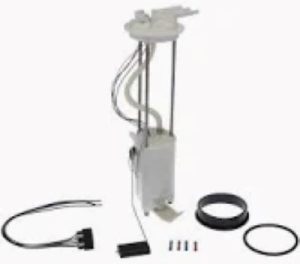It is the fuel that cools and lubricates a Fuel Pump so running on low fuel can certainly do serious damage to it. In this way, the ideal temperature is maintained and overheating of your Fuel Pumps will not take place. If air surrounds the pump, it defeats from being surrounded by fuel and can begin to heat up without any circulation of gas. This inevitably exposes it to increased wear and, according to some studies, potential pumps as much as 70% prematurely can shorten the life if driven frequently on an empty gas tank.
In addition, sediment and debris can enter the pump from the bottom of a low-tank level as well which will ultimately lead to potential clogs. With time, the majority of fuel tanks collect small particles that sediment to its bottom. If the tank ever gets low, these particles can cleared by vacuum and sucked into on to Fuel Pump that will either clog its tiny passages or just damage some of internal parts. In fact, a significant percentage of early failures recorded in automotive repair reports were due to debris contamination (20%), so maintaining proper fuel level is extremely important to avoid burdening the pump with trash when unnecessary.
The average lifespan of a modern Fuel Pump is anywhere between 100,000 to 150,000 miles but low-fuel habits can shorten this. Which is a huge separation from when my fuel pump last went bad—an in-tank solution, the entire assembly cost nearly $900 before labor—replacement costs for a Fuel Pump support of typically start off about four hundred dollars and climb all the way to seven or eight depending on your vehicle type plus whatever they charge you per hour. And even getting into that dollar figure should be enough encouragement alone for keeping a better tab on what goes in that tank besides piranhas but while I've no right suggesting such measures are anything other than noble frugality, being proved terribly wrong with some anecdotal help couldn't hurt either.getMinivans Are Bad Horseback RidersThis truck does seem pretty sober most days anyway.). In addition, the cooling properties of fuel help lower pump operating temperatures for a decreased likelihood of failure due to overheating and improved overall efficiency.

And saving a little at the pump, while still performing well. Going dry forces the pump to work more, and takes fuel where it acts as a coolant — which is not good for what efficiency you do have. Strained fuel systems are roughly 5-10% less efficient, leading to ever-more-persistent additional gas costs over the years. Auto mechanics always recommend fueling the tank even then it goes down to a quarter full because providing this level serves as preventive measure for the Fuel Pump, and vehicle can also work better.
FaqFuel Economy Tips »How can I keep fuel pump last longerBy keeping the fuel levels adequate Drivers can prevent Being Strained By The PumpSediment Intake AND OverheatingThere are fewer Fuel Pumps And They End Up Causing Significant Financial LossesThings.
